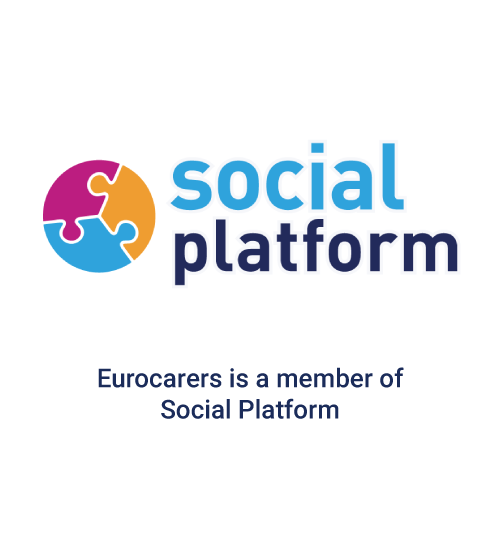FINLAND

In the period 2019-2050 the share of 65+ people in the Finnish population is expected to grow from 21.8% to 27.5% (EU-28: 20%-28.5%), with most of the growth happening before 2030. At the same time the share of people 85+ will expand by more than a factor 2 from 2.7% to 6.4% (EU-28: 2.7%-6.1%).
Over the same period, the old age dependency ratio measured as 65+ as percentage of the 15-64-year olds will rise from 34.2% (EU-28: 30.5%) to 49.6% (EU-28: 55.3%).
Life expectancy for men and women at age 65 is projected to rise from 18.4/22.1 years (EU-28: 18.1/21.4) in 2017 to 22.3/25.8 years (EU-27: 22.4/25.6) in 2060. In 2017, healthy life expectancy for men and women was of 9.4 and 8.9 years, respectively.
Under an assumption of no policy change the Ageing Report scenario suggests that public expenditure as share of GDP would rise from 2.2% to 4.5% (EU-27: 1.6%-3.1%) by 2070. The impact of a progressive shift from the informal to the formal sector of care in France would entail an estimated increase by 124% in the share of GDP devoted to public expenditure on long-term care (128% on average for the EU27).
In Finland, social protection for older people consists of income security and services in kind, arranged as a part of social and health care. Entitlement to long-term care (LTC) services in Finland is based on residence in a municipality. Services are granted on the basis of an individual needs’ assessment. There is a wide range of in-kind benefits such as home care, sheltered homes, more intense institutional care, and health care centres; as well as cash benefits such as care allowance, tax deductions for services, and informal care support. Municipalities can provide in-kind services themselves or buy them from other municipalities or from private service providers. Therefore, most of the costs of private service providers are also paid for by the municipalities. Municipalities may also give vouchers for the elderly to buy services themselves from private service providers. Most of the costs are covered by taxes even though client fees are collected. In 2014, clients paid 18.5 % of the costs of services for the elderly.
Even though LTC is a public responsibility, families play an important role − not only as guides to find services, but also as helpers and carers
Nevertheless, the complexity of the system means that many clients cannot cope in the web of multiple services and service providers and take-up rates (rather than coverage) are therefore low. Consequently, families may not always find the services they need the most.
Even though LTC is a public responsibility, families play an important role − not only as guides to find services, but also as helpers and carers.
Number of carers
In Finland there is no legal obligation to take care of one’s relatives, except for one’s children under 18 years of age and one’s spouse (married or registered). In spite of this, more than a million Finns regularly help their loved ones in everyday life. About 350,000 of them are primary carers and therby allow the person in need of care to remain in their own home for as long as possible. Out of these 350,000 carers, it is estimated that 60,000 provide highly demanding care. (Carers Finland, 2020)
Access to information and advice
There are a number of ways in which relevant information on caregiving, available support services, entitlements and benefits can be made available to informal carers – online, via telephone or through service centres. In Finland, for example, a one-stop-shop support centre for informal carers “Omatori” was established in the South-Savo region. The centre gathers over 70 services ranging from information and counselling to preventive services that are accessible for informal carers at one place.
Carers’ mental and physical health
In addition to providing a minimum of two days of statutory respite care services to informal carers, the Finnish Informal Care Act makes provisions on coaching, training and welfare and health checks for carers, which the municipality must organize if needed. The content of health examinations, coaching and training is determined by the individual needs of the caregiver and the requirements of the caring situation.
Access to respite care
Arranging rest for informal carers is crucial. Only 1/3 of the informal care support receivers use the leave available to them, and one third use fewer days off than they are entitled to – they simply think the substitute care provided is not good enough or not suitable for the care-receiver (Kalliomaa-Puha & Tillman 2016). The problem is well known and a lot has already been done to tackle it. Hiring substitute carers from the family circle seems to have worked well. Since not all families can supply a substitute carer, some municipalities have invented substitute carer pools (sijaishoitajapankki) (Mattila & Kakriainen 2014). Another option is ‘Family Foster Care’ (perhehoito), which is provided at the carer’s home.
Family Foster Care can be provided at the care recipient’s own home by so-called travelling family foster carers or at the family foster carer’s home. Family Foster Care is arranged, supported and supervised by the municipality. A commission agreement including rights and responsibilities is made between the municipality and the family foster carer. This form of service is suitable when the care recipient has a disability, illness or feels unsafe. It is granted based on the customer’s life situation and the need for support, guidance and care. Family Foster Care offers individual care and supervision and is designed to flexibly serve the needs of the care recipient. When considering Family Foster Care, the care recipient’s wishes, the opinions of family members as well as the skills of the family foster carer in relation to the care recipient’s needs are taken into account.
Family Foster Care can take different forms. Travelling family foster carers support informal carers by participating in their daily life (cooking, nurturing, rehabilitating and spending time with the care recipient). This option is especially suitable for people with memory disorders as they do not have to leave their own home.
Recognition and definition of carers
In Finland, there are many benefits available for carers. However, families in challenging situations may not have the resources to find the information they need. The application procedures may be too complicated for the elderly themselves, or even for relatives with low educational attainments. The discretionary nature of the benefits may also cause different outcomes around the country.
Policy measures supporting informal care in Finland have been targeted to develop informal care support, which is a formal social service to support informal caregivers and cared-for persons. It consists of the caregiver’s allowance, care leave and services provided for both the compensated informal caregiver and cared-for person. The provision of the service is steered by the law on informal care support (Laki omaishoidon tuesta, 937/2005) which was introduced in 2006 to remedy concurrent deficiencies in the community care. The law dictates about the eligibility to the informal care support, caregiver’s allowances, care leaves, municipalities’ responsibilities to arrange respite care, about care plans and contracts between compensated informal carers and municipalities.
The law on informal care support was reformed in 2016 to include physical examinations, education and training for caregivers. The law enacted in 2016 also extends care leaves to at least two days a month for all compensated informal carers (HE 85/2016). In case of demanding and binding care duties, compensated informal carers are eligible to three days of care leave a month. The government bill (HE 85/2016) evaluated that the cost of the reform would cost Finnish municipalities 90 million euro in 2017, but that savings due to the reduced use of formal services would outweigh the costs. Although the existence of the substitution effect might be realistic, the magnitude of savings hinges on how much the 2016 reform will increase the provision of compensated informal care in Finland.
Social inclusion of carers, access to education and employment
Cash benefits
Family care is supported by different forms of cash-for-care schemes such as informal care support or care allowances. People can also have a tax deduction for the expenses of caring for their or their spouse’s children, parents or grandparents. The tax credit for domestic help or household expenses (kotitalousvähennys) reduces taxes directly. After one’s own liability of EUR 100, the maximum credit is EUR 2,400 per person per year. This has not been a very popular option – only 3% of the deductions were used for care in 2011 (Häkkinen Skans 2011).
Informal care support is paid to a relative who provides care at home for an elderly person, or a person with a disability or a chronic disease. Municipal informal care support demands a contract between the municipality and the caregiver. The amount of the support is linked to the intensity of the care needed. If the caregiver is unable to work due to heavy care obligations, the minimum amount is EUR 774.98 a month, and in the case of less intensive care the minimum is EUR 387.49 a month. The support is treated as taxable income and it accrues pension rights (although the accrual rate is small). This informal care benefit also includes municipal services for the care-receiver needed to make care at home possible. These can consist, for example, of help with washing, medical care or meals on wheels. In addition, these official informal carers are insured for accidents and, most importantly, get days off. A carer doing demanding care work gets three days off per month. Municipalities may also offer institutionalised care at intervals, in order to give the informal carers some rest. Some carers space out their time according to these intervals. Since 1 July 2016 municipalities have also been encouraged to arrange social and health services for informal carers in order to support their work. From 1 January 2018 informal carers are provided with coaching related to their caring duties. At present, there are approximately 40,000 informal carers who have a contract with their municipality and receive informal care support, out of which approximately 60% are pensioners. However, it has been estimated that an additional 300,000 people help their old, sick and disabled relatives. Out of these 300,000 carers, 60,000 even give highly-demanding care. Thus approximately 20,000 additional carers would be entitled to informal care support (Tillman et al. 2014).
There are also other cash benefits which may facilitate the hiring of help, or assist in combining work and care. Disability and care allowances are provided to cover the extra expenses caused by illness or injury. They are paid to the disabled herself/himself – naturally the child allowance goes to the parents. The allowance is payable at three rates: the basic rate (significant hardship and continuous expenses) is EUR 92.94; the middle rate (the hardship is considerable) is EUR 216.87, and the highest rate (EUR 420.51) is paid to people with severe disabilities. The benefits are paid by Kela and they are tax-free income.15 These amounts are significantly high, if compared to the amounts for informal care support and are thus of considerable importance to the families of chronically ill or disabled persons, also facilitating the hiring of help to combine work and care.
Care leave
Combining work and taking care of a child with special needs is somewhat easier than combining work with care for an adult: working parents can use the relatively generous leaves provided for all parents.[1] In particular, child care leave is available for those willing to take care of a disabled or chronically ill child at home. Parents are entitled to it until the child (or youngest child) is 3 years of age, and their job is also secured during this period. Home care allowance is paid during that period. Part-time workers also get support: flexible care allowance can be paid to a parent caring for a child under 3 years of age who works no more than 30 hours per week.[2]
Parents of a disabled or chronically ill child may also benefit from partial care leave: all parents of a child in first or second grade are entitled to partial care leave providing they have been working at least 6 months during the past 12 months (Employment Contract Act (55/2001)[3] 4:4§) If a parent is working maximum 30 hours per week due to child care, Kela pays part-time homecare allowance for the period concerned.
Disabled children go to school a year longer than others. If the child is enrolled in this extended compulsory education, the parent may receive partial care allowance for a year longer – for example, already during pre-school or also during child’s third grade.
To combine work and care, even shorter leaves are vital. When the child is under 10 years of age and falls ill, the parents can take temporary care leave for 4 days in a row to stay at home and care for the child. The eligibility for temporary care leave is based on the Employment Contracts Act. The leave can be taken either by either parent. A parent who does not live in the same household with the child is also eligible for care leave. The right to these leaves are especially important for those parents with chronically ill or disabled children in day-care or school, since these children tend to be ill more often than others.
Older care recipients too can have a tendency to more frequent illnesses. However, when a youngster or an adult is in need of care, there is no right to similar leaves, even though the progression of illnesses is difficult to forecast. According to the Employment Contracts Act an employee can be away from work if a family member gets ill[5]. According to section 7, absence for compelling family reasons is allowed if the employee could not have seen it coming. If the employer so requests, employees must present a reliable account of the grounds for their absence. The Act does not present any time limits. It is considered that the absence may last a couple of days, during which the employee should manage to organize care for the family member[6].
An employee may also ask for longer absence for taking care of a family member or someone close to the employee. The employer is not required to pay the employee remuneration for the leave. The act states, that “the employer must try to arrange work so that the employee may be absent from work for a fixed period” Thus, there is no subjective right to the absence, only a recommendation. On request, the employee must present the employer with proof of the grounds for absence. Also, flexible working time arrangements such as flexi-time, job alternation leave or remote work might help with combining work and care. However, there is no subjective right to these leaves. Part-time work or part-time pension might also be the solution. Nonetheless, part-time-work is relatively rare in Finland: 22% of working women and 11% of working men worked part-time. Only 12% of the women working part-time did it because of care duties.
The terms of job alternation leave tightened from the beginning of 2016. From now on one gets 70% of one´s unemployment benefit for a maximum of 180 days. To be eligible, one needs to have a 20-year-working history.[7]
[1] See the terms of maternity leave, parental leave and partial parental leave http://www.kela.fi/web/en.
[2] http://www.kela.fi/web/en/flexible-care-allowance.
[3] http://www.finlex.fi/en/laki/kaannokset/2001/20010055
[5] Tiitinen – Kröger 2003.
[6] Tiitinen – Kröger 2003.
[7] See http://www.te-services.fi/te/en/jobseekers/finding_job/job_alternation_leave/index.html
- The 2021 Long-Term Care Report, Trends, challenges and opportunities in an ageing society, EC 2021
- UNECE Policy Brief on Ageing No. 22, September 2019
- The 2018 Ageing Report, Economic and Budgetary Projections for the EU Member States (2016-2070), EC, 2018
- ESPN Thematic Report on Challenges in Long-Term Care, Finland, EC, 2018
- Long-term care policy in Finland – Linnosmaa, I; Sääksvuori, L, 2017
- ESPN Thematic Report on work–life balance measures for persons of working age with dependent relatives, Finland, 2016
- Joint Report on Health Care and Long-Term Care Systems and Fiscal Sustainability, EC, 2016
- Adequate social protection for long-term care needs in an ageing society, European Commission, 2014
Last Updated on March 2, 2023































